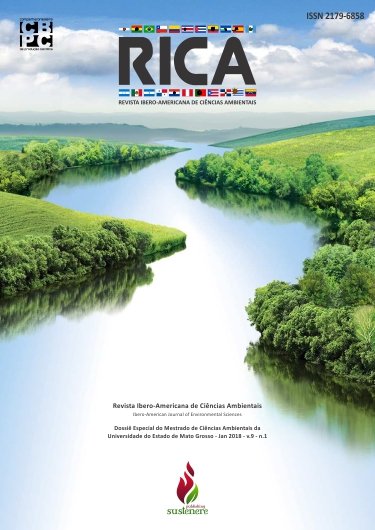Case study: case study in a rural community of pantanal mato grossense
DOI:
https://doi.org/10.6008/CBPC2179-6858.2018.001.0007Keywords:
Water scarcity, Rural Settlement, Potable waterAbstract
Water is a resource of great importance for human development and survival, but the problem of quantity and quality is a matter of worldwide concern. The objective of this study was to present the situation of families suffering from water scarcity, through the report of the women residing in the settlement Laranjeira I, located on the edge of the Pantanal of Cáceres - MT. To the data collection a descriptive qualitative approach was adopted, with an exploratory character. As a research method, a case study was carried out using a structured questionnaire, a semi-structured interview proposed by Kaufmann, conversation wheels and field diary records. The sample had 20 families. As far as water supply is concerned, 70% of households have as their main source of water the mines (springs) that are obtained by gravity, pumps, buckets and other containers. All families interviewed claimed to use alternative sources such as the springs for collecting water for human consumption and storing the water in gallons and pet bottles. Through the lines it was possible to verify that little progress was made in the process of obtaining water, however some families were able to acquire water in their lots through the drilling of wells. The familyis use a motorcycle, a car, a bicycle as a means of locomotion for the collection of water. In Laranjeiras Settlement I was also found that many families sometimes longed for the desire to leave the settlement because of the lack of water. Conflicts have also been observed among residents of the water-related settlement, where families compete for mines and use strategies such as the installation of various pipes that bring water to homes. It was also possible to identify that the families adopted adaptation measures to overcome the lack of water, such as the collection and collection of rainwater. Finally, this reality of the studied community evidences the need for structural transformations and actions that aim to increase access to water supply systems. Addressing those excluded from access requires acknowledging the highly vulnerable situation in which this part of the population is inserted and considering the multiple dimensions and diversity of challenges for the effectiveness of sectoral actions, such as interventions in water supply for human consumption.
Downloads
Downloads
Published
Issue
Section
License
The CBPC - Companhia Brasileira de Produção Científica (Brazil CNPJ: 11.221.422/0001-03) the material rights of the published works. The rights relate to the publication of the work anywhere in the world, including rights to renewals, expansions and dissemination of the contribution, as well as other subsidiary rights. All electronically published works may subsequently be published in printed collections under the coordination of this company and / or its partners. The authors preserve the copyright, but are not allowed to publish the contribution in another medium, printed or digital, in Portuguese or in translation.









